If you’re a loyal follower of the blog, you’ll know that the ilex vomitoria “schillings” is one of my favorite little trees for bonsai.
It could possibly be said that I have way too many ilex. way too many.
That it’s a mania or an obsession or something….
Possibly.
But I’ve taken it upon myself to become the ambassador for the species in the Country and hopefully Worldwide (I have readers all the way from Africa, Russia, Japan, Spain and more).
That said, here’s a spectacular and fat little tree for your amazement and enjoyment.
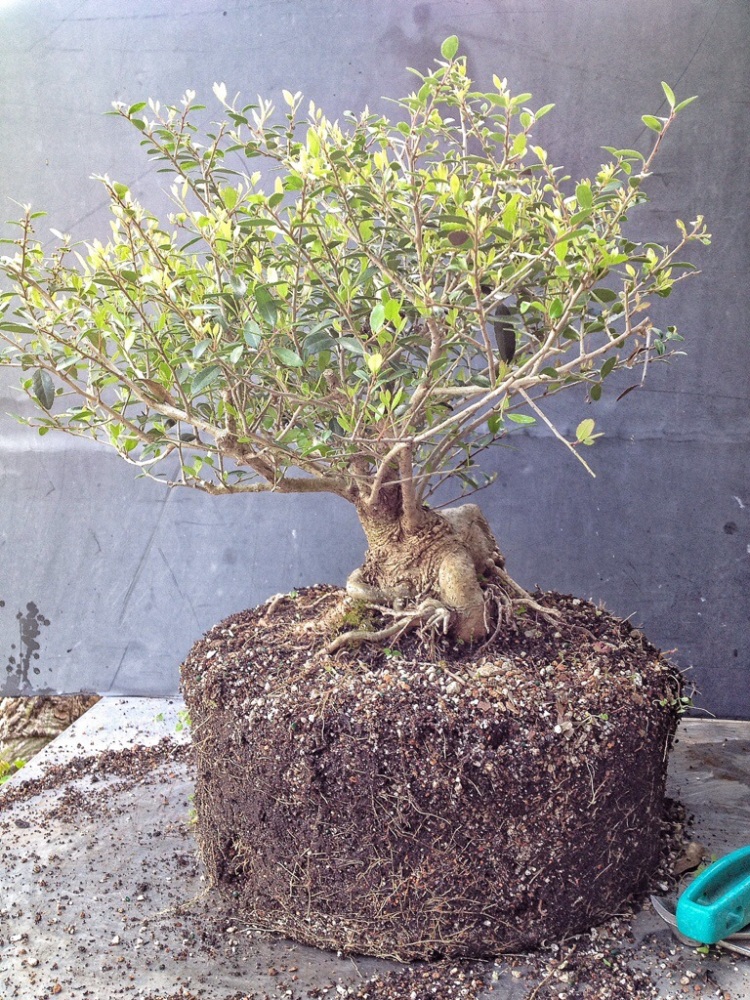
Oh, wait, I don’t have a banana for scale but I do have a pair of concave cutters.
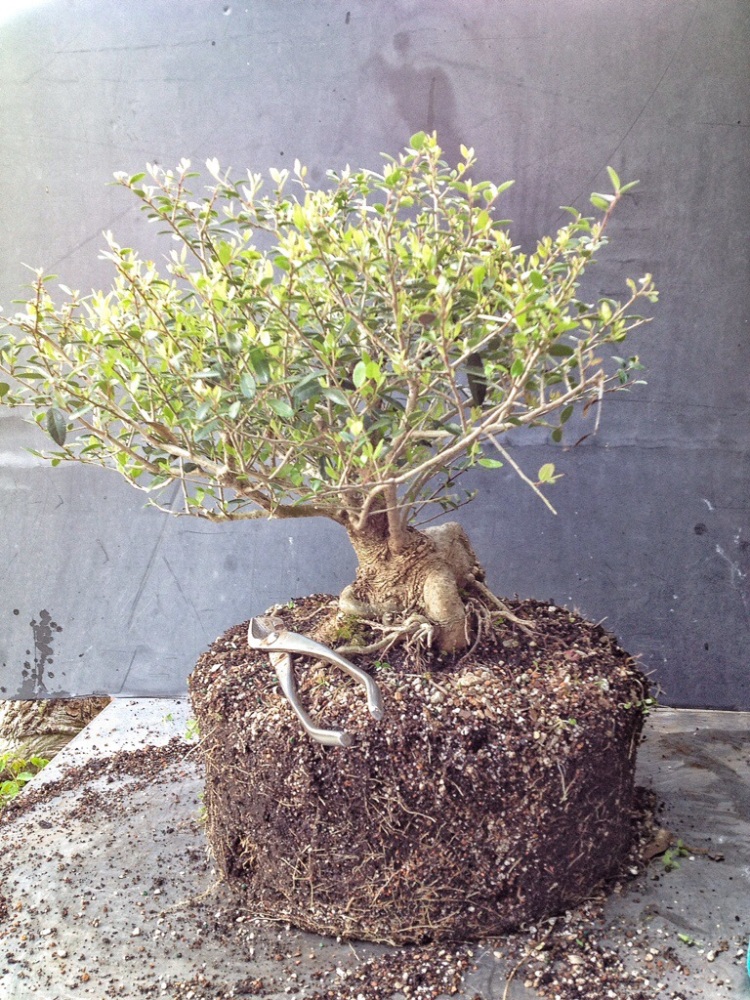
If there ever was a candidate for a sumo style tree, this ilex is one.

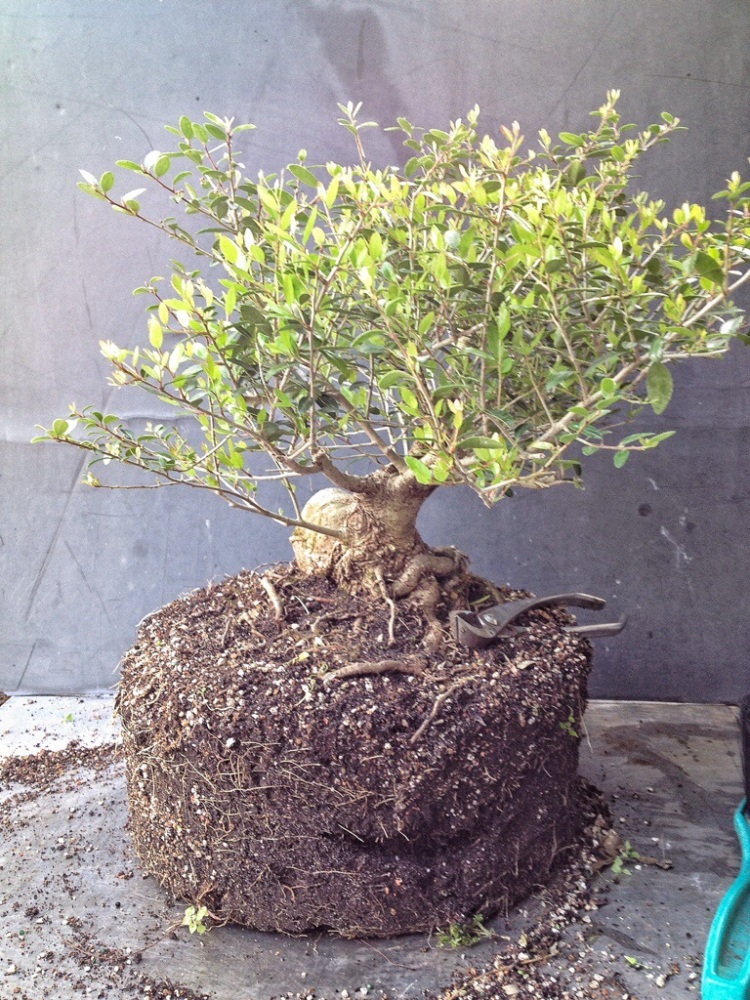
This tree, my friends, is sweeter than a Jammie Dodger….at least, I think so.
And Jammie Dodgers are the sweetest British biscuits (cookies to us Yanks) owned by the Ontario Teacher’s Union Retirement Fund, by a far margin.
The tree (not the biscuit) looks a bit snail-like.
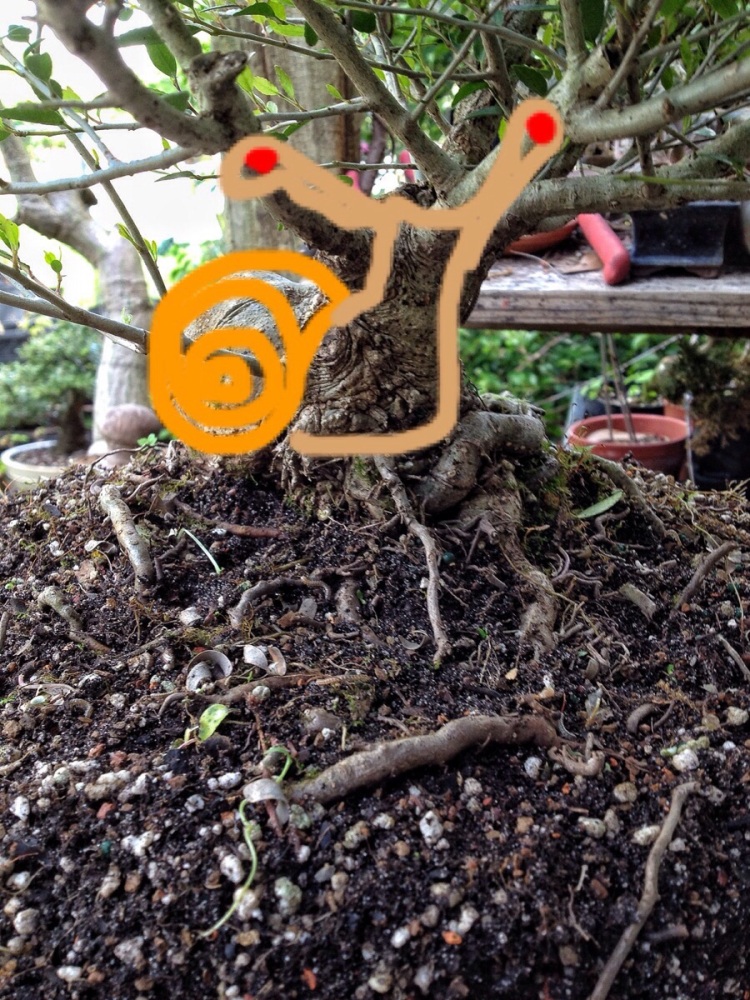
Let’s see if I can make it a bit more tree-like.
I shall try.
First, I must do something with the crossing and distracting roots.

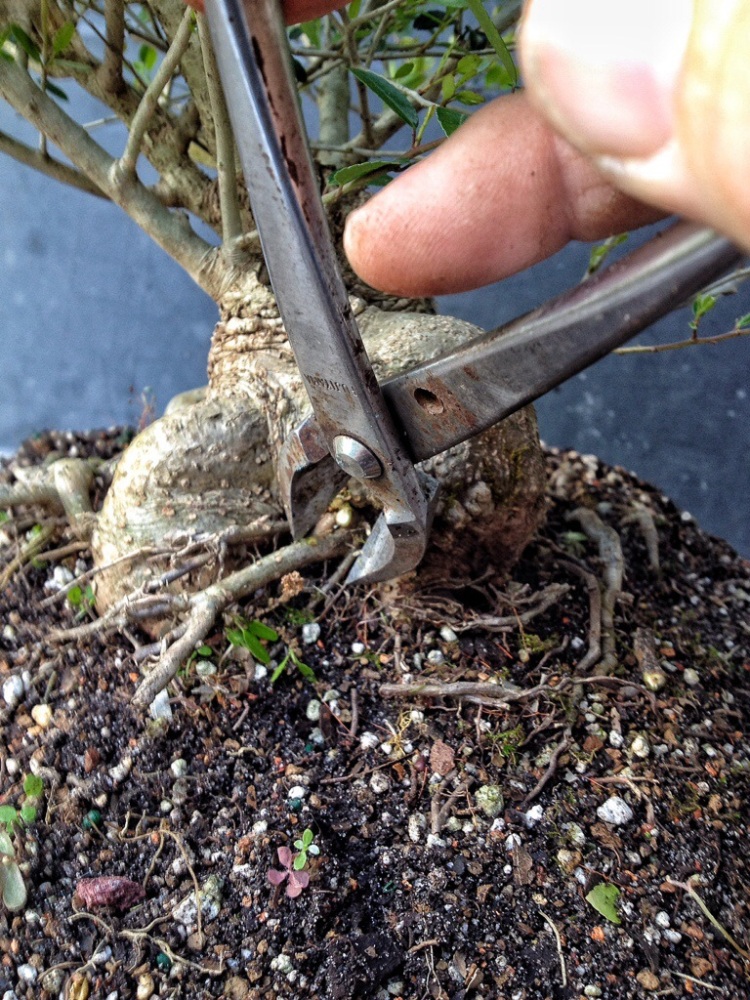
Why should I bother getting rid of these?
Let me remind you that one goal of bonsai, at least for most of bonsai trees, is to make a small, relatively young tree look like a tall, old tree.
And small, high, crossing roots are not conducive to that aim.
Why?
Small roots are out of scale.
High roots, unless in an exposed root style (which would mean a swamp, coastal or riverbank tree) are just not natural looking.
There are those who say that crossing roots do happen naturally, and the answer is yes, they do, but on old trees they tend to meld into themselves and are not seen.


That’s much better.

That done, let me make one cut, for no particular reason except that I need to…..

Look at that rusty “stainless” steel concave cutter, I can’t wait until I get my new set of tools from the American Bonsai company.
I’m actually removing this one branch for several reasons.


It’s straight, it’s old wood (which means unbendable) and it’s too thick for what I’m going for. Which you’ll have to wait a bit more to see what I am going for.
We have some more rootwork to attend to on this little yaupon.
Funny word, yaupon, isn’t it?
The common name of this tree is “dwarf yaupon holly”.
Let me break that down for you: the “dwarf” part means that there is a full size tree out there and this is a smaller version of it.
The “holly” part means that this is a member of the holly family.
The “yaupon” part is the interesting part.
If we examine the Latin name we will begin to understand a bit about the common name so….
Ilex vomitoria “schillings”.
Ok, ilex is “holly” in Latin. Easy.
Vomitoria is, actually, the an easy one to explain too.
When Europeans first came to lá Florida, they observed that the Native Americans used the leaves of this tree (they called it”yaupon”) to brew a “black drink” that the male warriors would consume before a battle.
This consumption ended in vomiting.
The Europeans thought that there was a specifically emetic quality about the leaves that caused this vomiting and, hence the name “vomitoria”.
Now, mind you, the tree was named by a gentleman in Europe who had never seen or experienced this ritual practiced by the natives but, I must say, he was wrong in his assumption.
The vomiting was actually caused by the sheer volume of drink consumed by the natives.
It was a competition to see who could hold more drink.
Would it were that we drank the black drink instead of lite beer in the modern day equivalent of this competition.
The black drink is actually a refreshing, antioxidant filled energy drink we should pursue commercially. Hmmmmmnnnn?!?
The “schillings” part of the name is still a mystery to me. Perhaps that’s what they sold the dwarf version for in England?
So I’ve called this tree a dwarf, what does this actually mean?
Let me ‘splain…
The ilex vomitoria is a plant with a male and female version (really, truly, and actually. The word for this is dioecious).
The male is a smaller tree than the female and somehow, somewhere, a male tree had a mutation on one of its branches that caused it to have even smaller leaves, very short internodes, and a smaller ultimate height (more bush like than tree like). A smart man (perhaps his name was Schilling??) saw this, took cuttings, and now there are millions of dwarf yaupons, pruned into vaguely meatball-ish shapes, out in front of people’s houses across the world.
And the whole point of the above essay is simply to explain this:
Those Native American peoples called the ilex vomitoria yaupon, right?
What does yaupon mean?
Well, it quite simply, means “The Tree”.
Which, in a round about way, leads us back to our tree:
Root chop time.

This is the part you don’t see in those other, fancy, pre-processed-tree bonsai blogs.


This is where my hands get dirty, which I am proud of a bit.

I’m a hard working bonsai man.
After the chop, I’ll remove some of the big, unnecessary roots and then wash off the old dirt.
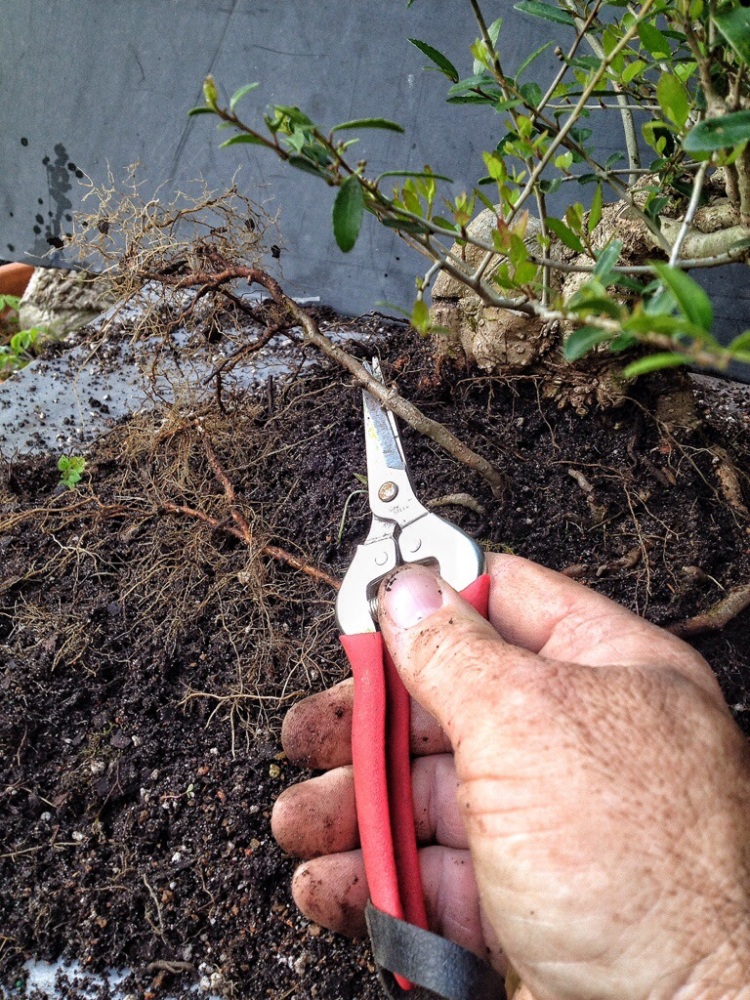

The big roots are not necessary to the health of the tree, only the fine, white feeder roots are.

And it’s important to wash out all the old dirt from this root mass. If I don’t, once I put the tree in a shallow bonsai pot, it will never dry out enough and you’ll have all types of disease that can attack it.
The yaupon is a tree that is considered a xeriscape plant. Once established it doesn’t need much water.
It also has an oil in the leaves that, when the old leaves drop onto the ground, cause the soil underneath to become hydrophobic. Which means it repels water.
This tells me that, in Florida where it rains a lot, and where the tree is native to, the yaupon needs well drained soil with lots of air space.
Bonsai soil!
But wash out all that old peatmoss crap it’s been growing in first.

Now I can get to the last of the chunky roots underneath.

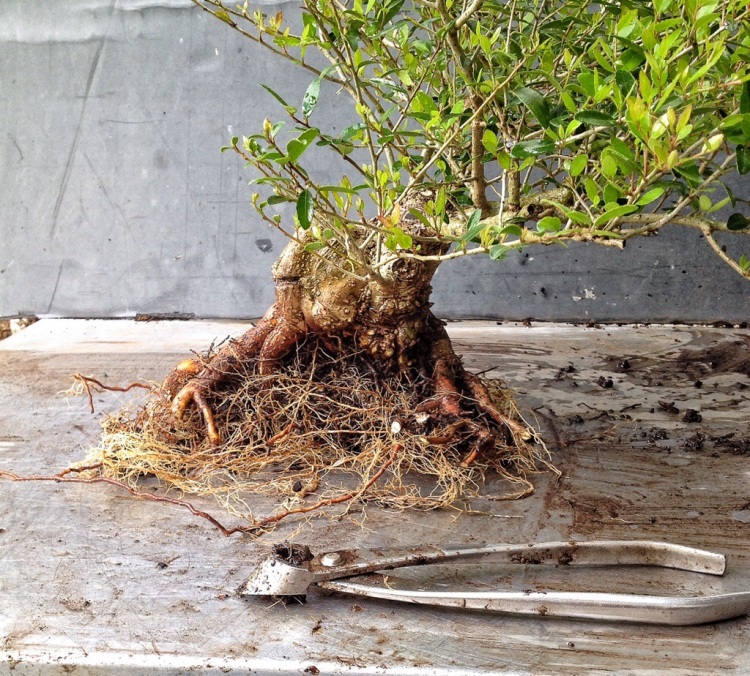
Now I have to figure out the front.
I think I prefer the second pic above.
A pot.
I think it would look good in this really shallow pot.
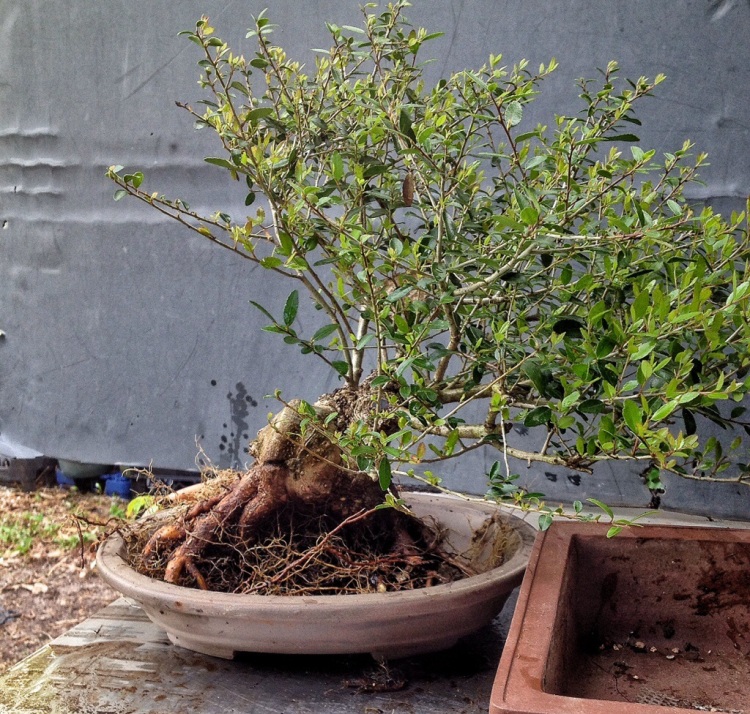
But, to encourage better drainage and some accelerated growth, this will be the pot for now.

It goes quick from here. Pruning and potting.

Hmmm dee hmmm…

Snip chop


Almost……

Ah, that’s right.
What I did was to cut out all the old wood and left all the young, flexible branches so I can do some wiring.
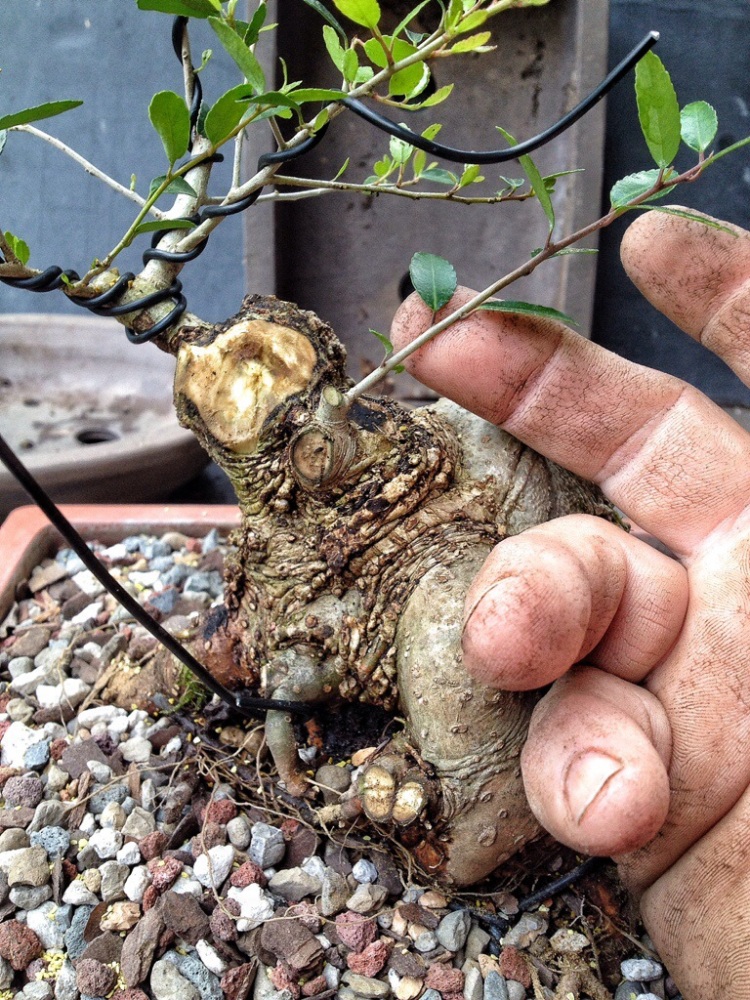
Here’s an unorthodox trick.
This is in the back of the tree where it’s not visible and the wire I’m using is stiff enough to do it.
I anchor on a root and wrap the first wire around the big stub at the base of the branch on top.

Then I wire the branch.

Like I said, not a regular practice but first, it is a strong anchor and B, it’s the first wiring and, frankly, nobody will see it except you (and the thousands of others who see it in this case I guess).
I’d never show a tree like this but on the first styling I don’t care.
Onward my friends..

How do you all like this new black aluminum wire?
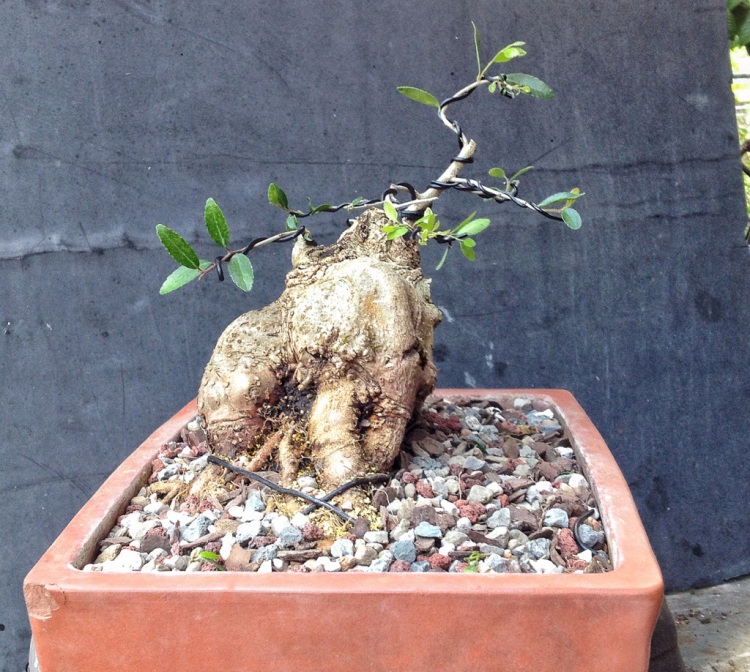
Looking at the left side you’ll notice that there’s a distinct lack of branches on the backside of the apex.
I know how this tree grows and it will shoot out ample branches wherever I need them.
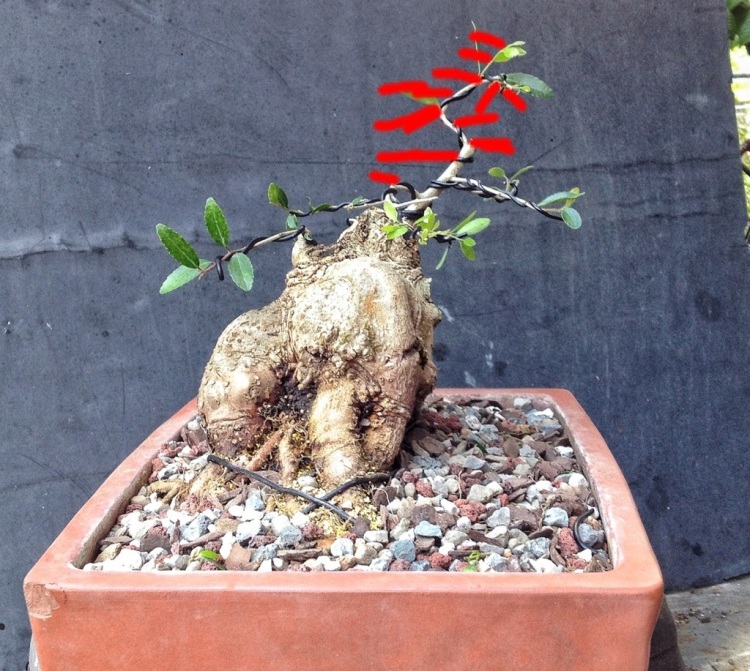
I also left it a little tall.
This will give me more options for building the crown when it grows out.
The right side.

The back.
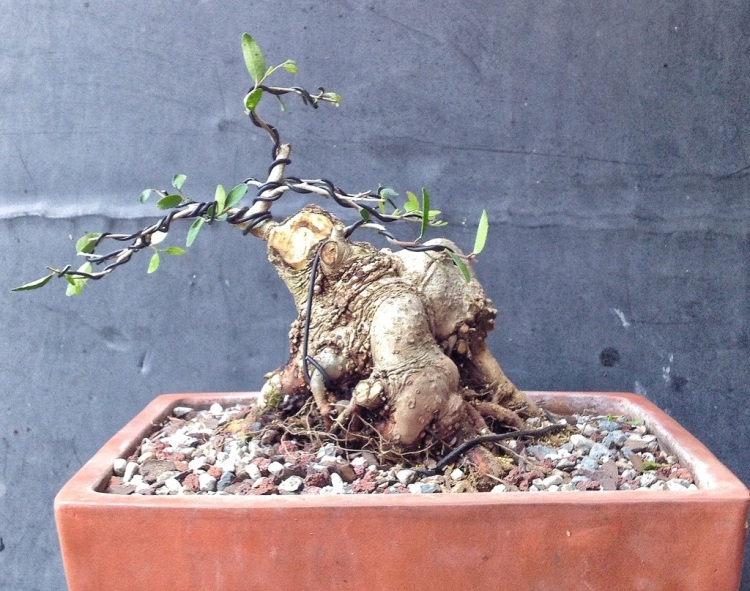
And the front.

It is over potted and not really in the correct style pot for the tree but, as I said, it’s just in training.
It’s also probably an inch too tall.
So the pot should be a bit like this:

Maybe with an irregular oval or rounded edge rectangle.
And the canopy should be about like this:

I fertilized it with Holly Tone, an organic fertilizer made by Espoma that is specifically for hollies.
Which, if you read the text above and didn’t just skip over it (like I might do….) you would know that it’s a holly.
As always, I’ll let you know what happens with this little ilex.
I think I shall call this the snail style.
Considering the shape and size, the amount of roots I can cut off, and the small leaves, I think I have once again written another successful essay in favor of the ilex vomitoria “schillings” being elevated higher into the ranks of species used in bonsai throughout the world.
What do you think?


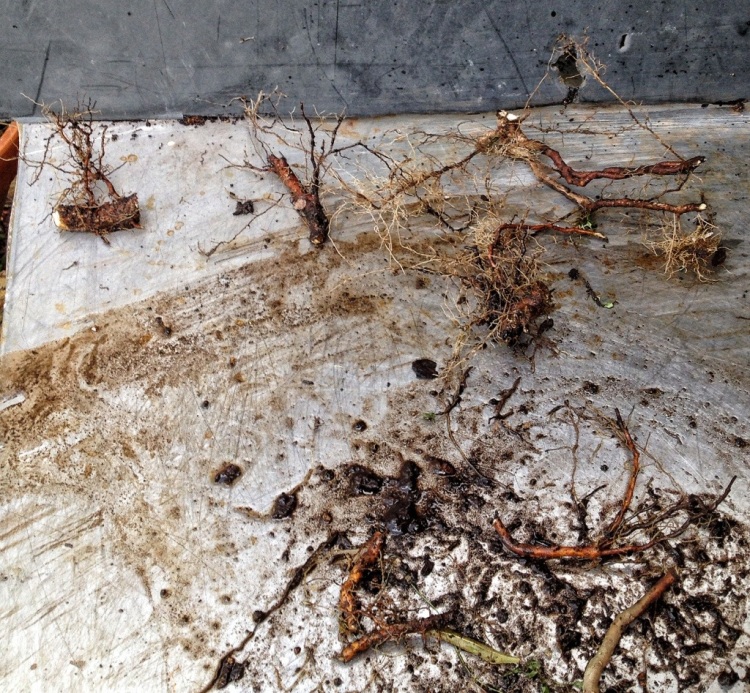

Beautiful !!
LikeLike
Hey adam, Love your site and your hollies! I too have gotten into the ilex as a bonsai, but I’m new to it and could use some advice. I live in Utah, and the winters get pretty cold. I don’t know anyone here who work with the Ilex, so I thought I’d ask if you know anything about the winter needs of the yaupon. I kept mine in all winter, and they’ve put out a fair amount of new growth which makes me worry that I over worked them in a period during which they should be dormant. Do your trees go dormant or are they constant growers?
LikeLike
My ilex do slow their growth in the winter. What is your lowest nighttime temps and does it stay below freezing during the days?
LikeLike
Mid winter can drop to 15 degrees or lower at night and not hit above 32 all day. Now its lows of mid 30s at night and highs up to 70 daytime. I’ve had them indoors all winter, so I don’t want to shock them. But I might try easing them into the outdoors or doing a cold room over next winter.
LikeLike
They can take down to 19 or so. A cold garage might be best
LikeLike
Thanks! Love your site. Keep em coming!
LikeLike
I am jealous of your mild Florida winters… and all of your trees and your talent, of course. This year’s round of “can I root this?” is so far looking cautiously optimistic… the cuttings I took last week are all showing green buds while their relatives outside are budding but still waiting for the go signal to go green. The cuttings I got yesterday, almost all of them are already popping a tiny bit of green on the buds, even the big ones that were more in the nature of cleaning up the tree than getting cuttings. I figured I’d give em a shot anyway.
They’re inside on the plant table along side the pepper and tomato starts because the sad fact is that while you may be well into spring here in Colorado the weather still isn’t quite sure what it wants to do. We’re still getting the occasional extra-cold night. Plus, on the plains, I’d have to have a greenhouse to have them “outside” without them getting blown over or away.
A long winded way to say I’m jealous of your weather, I guess.
LikeLike
I just received my first Ilex. A wonderful little giant with lots of promise. Anyway, my nighttime temps are above 50 degrees so I did as you demonstrated and repotted. It was mailed to me in black mud , unpotted and wrapped in cellophane. I cleaned it well and cut big roots. I am experiencing leaf drop and am in a panic. Is this normal?
LikeLike
I usually remove a good deal of the leaves whenever I do root work so I don’t usually experience it. I have seen it on other trees though. The tree will drop the old leaves in times of stress. I’ve seen them totally drop leaves if they dry out.
Did you fertilize and, if so, with what? Maybe you put too much on.
Keep the soil moist, not wet, and give it time. Good luck!
LikeLike
Thanks for the reply. I didn’t remove any branches because it was pretty well groomed. I added a bit of Tropical Green 3-7-1 organic fertilizer as I use Martha Goff’s soilless mixture and topped the planting with shredded sphagnum.
LikeLike
I bought me one of these hollies at a big box store a couple of years ago, with the intentions of keeping it a mame size, and it was perfect for what I had in mind. Well I went the miracle grow potting soil route, and after keeping it fairly dry all winter, I learned a harsh but valuable lesson in hydrophobic soil that spring. After tossing my little tree on the burn pile, I did the same to the remainder of the miracle grow, and haven’t looked back since. I’ve since come up with my own nursery mix that works well for me, and drains nearly as fast as my bonsai mix, but at a third of the cost of lava. Works well for growing out, and my junipers don’t seem to have a problem with it either. If my trees are happy, I’m happy. Great post, and I too love my hollies.
LikeLike